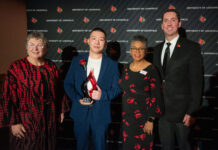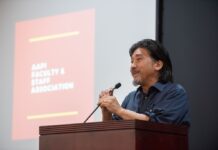The research is published this month in the online journal PLOS ONE and is authored by Brad Chaires, PhD, John Trent, PhD, Robert Gray, William Dean, PhD, Robert Buscaglia, Shelia Thomas and Donald Miller, MD, PhD.
Telomerase is an enzyme largely responsible for the promotion of cell division. Within DNA, telomerase activation is a critical step for human carcinogenesis through the maintenance of telomeres. However, the activation mechanism during carcinogenesis – why cancer gets turned “on” – is not yet wholly understood. What is known is that transcriptional regulation of the human telomerase reverse transcriptase (hTERT) gene is the major mechanism for cancer-specific activation of telomerase.
Miller and his colleagues have been interested in turning genes off therapeutically for some time. “We know that human telomerase is over-expressed in most human cancers, but we’ve never known why,” he said.
In 2013, two studies published in Science and another in Proceedings of the National Academy of Sciences gave the researchers a direction to explore. “These papers said that in most melanomas, mutations existed in the promoter of this telomerase gene. This was the first time that anyone reported common mutations in these promoters,” said Miller, who is director of the James Graham Brown Cancer Center and a specialist in the treatment of melanoma.
The UofL team has now shown that the mutations all occur in a region of the hTERT promoter that previously has been shown to form quadruplex DNA. Using a combination of biophysics and molecular modeling, a new form of a quadruplex transcription regulation element is reported. The formation of these quadruplexes in telomeres has been shown to decrease the activity of telomerase.
“We speculated that the occurrence of these mutations could destabilize or alter the recognition of quadruplexes formed by this sequence,” Miller said. “We found that the mutations inactivate the gene’s ‘off’ switch so it becomes locked on, destabilizing the quadruplex and allowing it to be over-expressed.
“This over-expression then drives the cells to continue to divide, which is the cause of the cancer.”
The researchers are next examining how to unlock the switch from on to off, Miller said. “What we have described in this PLOS ONE article is the on-off switch and provided an entirely new model for that structure. Our next step is to look at how to turn it off that will help lead us to new therapeutics to prevent the occurrence of cancer.”
The paper was posted online Dec. 19 in PLOS ONE.

























